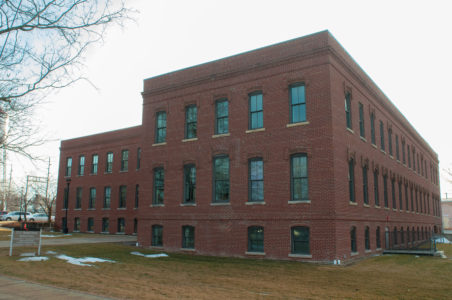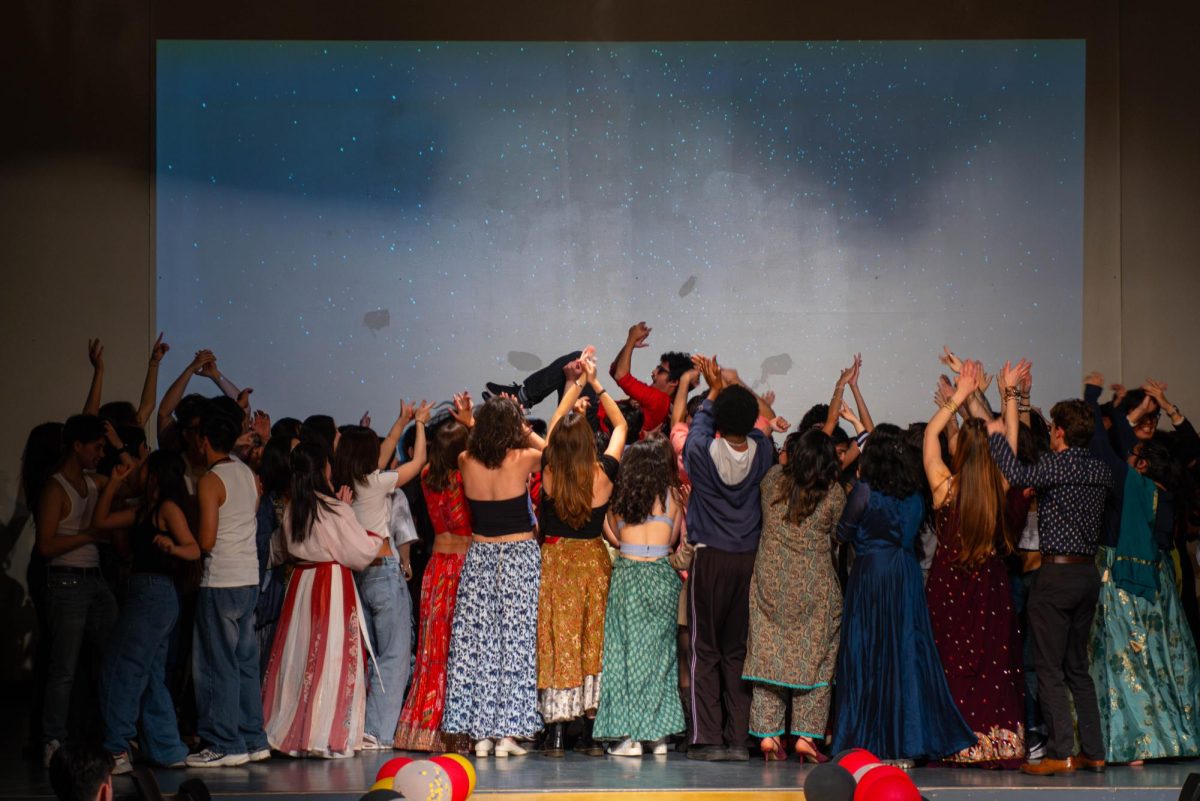
All of the College’s financial administrative duties happen at the Old Glove Factory, one of Grinnell’s most historic buildings — and arguably the most beautiful, with its high skylight and winding staircase — located on 733 South Broad St. However, before the College bought it in the late 1990s, the Old Glove Factory was, well, a factory. Over a hundred years, the brick building on Broad Street has been a jacket factory, a shoe factory and glove factory — one of the longest operating glove factories in the U.S. The current building on 733 South Broad St. has been there since 1892, after a fire destroyed its original location.
Monica Chavez-Silva, leader of the Office of Community Enhancement and Engagement, has worked in the Old Glove Factory since 2000, when she gained the position and when the renovations by Herbert Lewis Kruse Blunck Architecture based in Des Moines, IA, were completed. Part of what makes the office space great, in Chavez-Silva’s opinion, is its large windows that bring in natural light, serving as the perfect meeting location among community partners.
“From the perspective of community development, I think the most interesting thing about the Glove Factory is the way that it was an early “anchor” to this side of the downtown,” Chavez-Silva wrote in an email to The S&B. “At a time when it wasn’t popular to redevelop old buildings, the historic preservation of this building was an interesting example that has since taken hold across the community. In addition, when the College first decided to rehabilitate the building, there wasn’t as much activity in this corner of town and that’s changed dramatically over the years.”
Samanike Hengst ’18 works as a human resource assistant, located in one of the basement level offices, and was inspired to research the building for Professor Fredo Rivera’s “Modern Architecture and Globalization” course in Fall 2017.
“In my research, I found that it was one of the first buildings built in Grinnell. It was built along the railroad. Its industrial kind of brick façade was supposed to look modern, like the future of industry of Grinnell to what Grinnell was aspiring,” Hengst said.
“I really liked [the Old Glove Factory] because I like how it blends glass with brick,” Hengst added. “I really like old buildings but also love windows and I love natural light … When you come in there’s this light pouring in from above. … The [skylights] are key to the building. I also like the feeling of how everything branches out from the center part and how it’s integrated with the original courtyard coherently with the rest of the building.”
Frederic Morrison established the Morrison-Schults Tannery in 1856 shortly after moving to Grinnell. His father, William Morrison, was an associate of J.B. Grinnell and owned a tannery in New Hampshire. According to a newspaper article published in 1967, the company “had been growing with Grinnell almost since the day Grinnell was founded.” Based on its central location at the intersection of railroads crossing, the factory indeed was a strong representative of the town.
The business expanded over the decades and gained new partnerships and U.S. locations including Puerto Rico, as well as national recognition due to its high profits, innovative advertising campaigns and style of gloves. One notable partner was the prolific and infamous alumnus B.J. Ricker, who after various bad investments related to his personal life and the factory, including being unable to pay back loans he got from the College’s Board of Trustees and misusing his position as director of Merchants National Bank, fled to California in the 1920s. He was partly responsible for the failing finances of the company, according to an article written by Professor Emeritus Dan Kaiser, history.
Morrison-Schults Manufactory Co. managed to rise. In the 1940s, Chuck DeLong, a Grinnell Glove salesman, handmade and sold “blouses” to the community. DeLong’s business grew and gained attention from Morrison-Shults. In 1964, Morrison bought the remaining shares of DeLong Jackets. Before the turn of the century, the manufacturing company ceased to exist and remained in bad state before the College bought it. The renovations made sure to maintain some of the notable structures of the building, while heightening the ceiling and making the building more accessible.
“They tried to keep the original slant of the ceiling that they had when they were renovating. My argument for the paper was that the new space was kind of a meeting of the old and the modern in the center and the courtyard is kind of everybody enters into it and sees the rest of the building in its rather original form,” Hengst said.
For anyone who visits the Old Glove Factory, whether to take in its beauty or to run a payroll errand, Hengst believes that knowing the history is key to appreciating the architecture.
“I think knowing of its history is integral to placing it in context with its renovated state,” Hengst said. “It’s one of my favorite buildings in the city and after doing this project I realized this more, and I think just recognizing that we have that piece of history in this town and what it means to the College.”
Chavez-Silva also echoes the importance of remembering history to appreciation of the Old Glove Factory.
“I love that people we work with remember the old building and see the difference,” Chavez-Silva said. “People have stories about working in the building and sometimes even send us memorabilia.”


















































Michael Thompson • Jan 21, 2025 at 9:16 am
My father, Jim Thompson and my Grandfather, George Thompson both worked there in the fifties and sixties. Great old building.